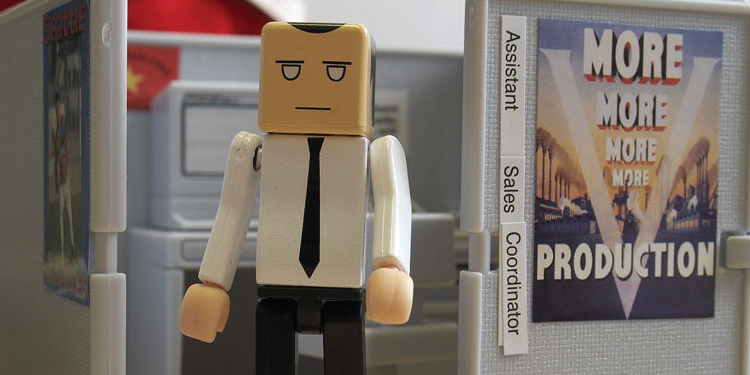by Jeff Toister
It’s not every day you solve a $50,000 problem.
That’s what the customer service manager had just done. It was a billing issue that fooled the company’s CRM system into thinking a customer’s payment had been processed when it really hadn’t. Incredibly, the IT department was able to fix the issue in just a few minutes.
The really amazing part was how the customer service leader had discovered the problem. It wasn’t through a metric. He didn’t perform a trend analysis. The leader discovered the problem after following up on a single complaint.
That’s the challenge with metrics. They can hide customer experience problems in big pools of data. Leaders who don’t augment data with a customer-level view may miss out on some big opportunities.
Here are three examples:
Example #1: Surveys
Customer surveys can hide problems.
Let’s say a company wants to know what customers think about a new self-help section on their website. They decide to collect feedback by surveying customers who complete a self-help transaction. The initial survey scores indicate a strong positive response.
But wait! What about customers who attempt to use self-help, are unsuccessful, and use a different channel to complete their transaction?
The survey won’t capture feedback from those customers. To get the full picture, you’d have to collect data from customers who by-passed self-help to see what discouraged them from using those features.
Surveys are helpful tools, but their data can hide problems if you don’t dig a little deeper.
Example #2: Productivity Standards
It’s a big mistake to equate productivity with customer satisfaction.
A common example comes from technical support. When a customer contacts a help desk, a support ticket is typically opened to track the customer’s case. Many technical support reps are held to a productivity standard for their average time to close a ticket.
A fast ticket closing speed is good, right?
Well, sometimes it’s really a sign of a big problem. Some technical support reps have learned to close tickets before the problem is actually resolved so their stats look good. This forces the customer to re-contact support and open a new ticket to get the help they need.
A ticket closing speed goal also discourages technical support reps from helping customers prevent future problems. They’re so fixated on moving quickly that they don’t take the time to ask additional questions or help educate their customer.
It’s dangerous to assume that speed automatically equals a positive customer experience. Most customers would prioritize getting their needs met over a faster response.
Example #3: Revenue
Many companies assume that everything is alright so long as customers are spending money. This causes them to miss problems that might prevent customers from spending more money in the future.
Retail provides a great example. One retail store did its best sales of the week on Saturdays. That was also the day the store received their weekly inventory shipment. Handling the new inventory was a priority because the store didn’t have excess storage space. Unfortunately, the corporate office gave the store a strict budget for how many labor hours they could spend that day. The store manager had to allocate most of that labor to stock rather than assisting customers.
The store’s revenue looked good on Saturdays because it was so busy. But, a lot of customers were turned off by the lack of service. They spent less money. Some customers decided to take their business somewhere else.
Don’t turn a blind eye to customer experience problems when sales are strong.
Going Behind the Data
The best customer experience professionals are like detectives. They assemble clues from various data sources to get a more complete picture of what’s happening. They visit the scene to get first hand perspective that’s difficult to imagine when you’re just looking at a spreadsheet.
Putting in this extra work can help you identify and solve more customer experience problems in the long run. Metrics play an important role, but they’re not the final word.
Image credits: Sebastiaan ter Burg, pfig via Creative Commons license



 Jeannie
Jeannie